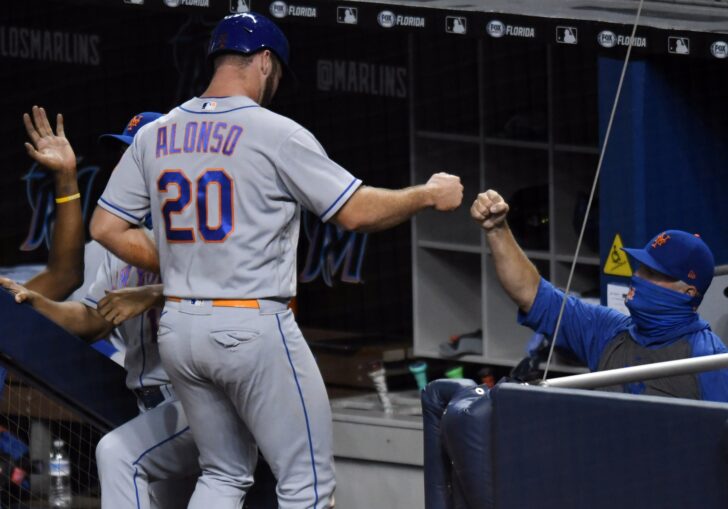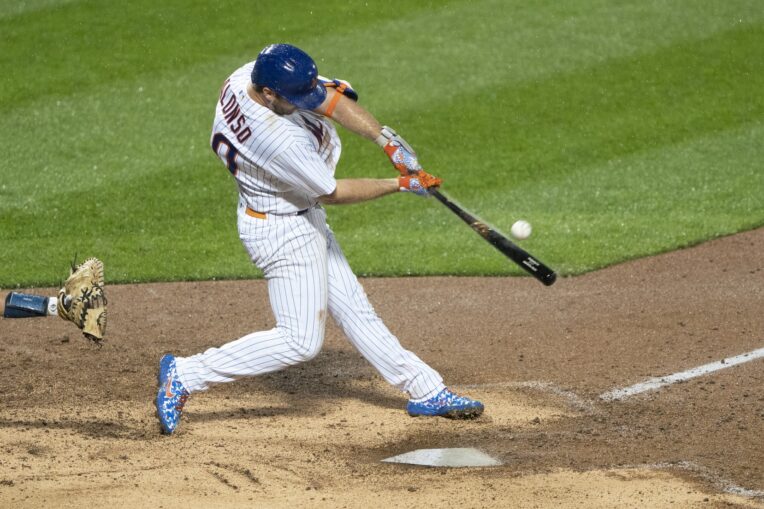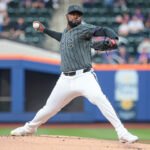
After falling short of making the playoffs once again last season, the New York Mets are determined to turn things around and finally participate in October baseball in 2021, but that means almost every single player could be made available this offseason.
Considering the Mets haven’t qualified for the postseason since 2016, there’s a sense of urgency within the organization to end that disappointing streak and begin creating a winning culture in Queens moving forward. But in order to accomplish that feat, there’ll likely need to be some significant changes made to the roster over the next few months, which includes improving the starting rotation, the bullpen, the catcher position, and the club’s overall run prevention.
Though the front office has finally been gifted some much-needed financial flexibility thanks to new owner Steve Cohen, there’s a very strong chance they won’t be able to address all of their needs solely through free agency. With that in mind, management will probably need to turn their attention to the trade market before next season begins, which could result in subtracting a notable asset from the position player group.
While players like Brandon Nimmo and J.D. Davis have already been linked to other teams this winter, it seems first baseman Pete Alonso could also be utilized as a trade chip, as the “polar bear” possess a ton of value at this stage of his career. Despite becoming a fan-favorite icon in 2019, and seemingly winning over the entire fan base with his inspiring actions showcased on and off the field, some experts believe this might be the perfect time to trade him, for the right price of course.
Since the first base position is considered one of the most expendable jobs in baseball, it’d be extremely rare for Alonso to remain in his starting role for an extended period of time, especially since he’ll be sharing it with teammate Dominic Smith next season. Even though he probably isn’t the long-term solution on the right side of the infield, it’d still make plenty of sense for the Mets to hold onto the 26-year old for at least one more season and then potentially consider moving on from him next offseason.
What’d be the difference between trading the 6-foot-3 first baseman now compared to next winter? Well, it’s possible the front office could receive a much larger return for the 2019 NL Rookie of the Year award winner if they decide to wait until the 2021 campaign concludes before making him available on the trade market. If he’s able to further convince that his breakout 2019 performance wasn’t a fluke, then there’ll likely be a much larger list of suitors interested in his services.

Despite struggling mightily out of the gate in 2020 – posting just three extra-base hits, seven RBIs, .106 ISO, .294 wOBA, 30.4% strikeout rate, 87 wRC+ score, and a slashing line of .197/.329/.303/.632 through the first 18 games of the season – Alonso was able to correct his woes through the remainder of the season, which certainly helped his case of being considered a reliable offensive weapon.
Following his horrible start to the campaign, the right-handed slugger made some key adjustments at the plate and salvaged his performance by producing five doubles, 14 home runs, 28 RBIs, .331 ISO, .367 wOBA, 23.1% strikeout rate, 135 wRC+ score, and an encouraging slashing line of .246/.325/.577/.902 over his final 39 games of the season.
In total, the former second-round selection earned 239 plate appearances, generating six doubles, 16 home runs (third-most among all qualified first basemen in the majors), 35 RBIs (sixth-most), .260 ISO (seventh-highest), .242 BABIP, .342 wOBA, 10.0% walk rate, 25.5% strikeout rate, 16.9% LD rate, 39.2% GB rate, 43.9% FB rate (fifth-highest), 12.8% barrel rate, 40.5% hard-hit rate, 90.2 mph average exit velocity, 118.4 mph average maximum exit velocity (highest), 119 wRC+ score, 0.4 fWAR rating, and a slashing line of .231/.326/.490/.817, according to FanGraphs.com.
Digging deeper into his second-half resurgence, Alonso – who created the majority of his stellar results against fastballs in 2019 – couldn’t replicate his success against heaters when the regular season opened but gradually improved against them as the summer progressed. As a result, that progression allowed the Florida standout to turn his 2020 campaign around during the final month of the season.
Over his 22 plate appearances against fastballs in July, the one-time All-Star didn’t create any extra-base hits or barrel any of them up, recording a .167 AVG, .195 xAVG, .167 SLG, .244 xSLG, .247 wOBA, .280 xwOBA, 22.7% strikeout rate, 36.6% whiff rate, 21.3% chase rate, 38.5% hard-hit rate, 7.7% FB rate, 87.9 mph average exit velocity, and a -6 degree average launch angle.
Thanks to his mid-season adjustment, the former top prospect produced six home runs, .311 AVG, .253 xAVG, .778 SLG, .635 xSLG, .462 wOBA, .381 xwOBA, 12.0% strikeout rate, 17.8% whiff rate, 20.4% chase rate, 46.2% hard-hit rate, 17.9% barrel rate, 38.5% FB rate, 92.3 mph average exit velocity, and a 25 degree average launch angle against heaters in September.
Despite Alonso’s encouraging results against fastballs in the final month of the season, there’s no question most organizations would likely point to his early-season struggles and they could be hesitant to surrender an impact player in exchange for him. But if he’s able to perform effectively against heaters throughout next season, then those same concerns probably won’t be an issue around this time next offseason.
Along with starting strong in 2021, the Flordia native would also improve his value if he’s able to take a positive step forward defensively next season, especially since he’s been considered one of the worst defenders at his position over the last two seasons. While no one is expecting him to become a Gold Glove award winner, although that’d certainly be helpful, he should be aiming to at least display minimal progress off his horrible showing from last season.
Among all first basemen who compiled at least 150.0 innings in 2020, Alonso finished tied with the most errors committed (five), tied for the second-worst OAA (-3), tied for the third-fewest DRS (-4), the sixth-worst UZR (-1.7), along with the ninth-worst UZR/150 (-4.3).
With four years of team control remaining on his current contract, there shouldn’t be any rush to trade Alonso this offseason, as there’s a very good chance he won’t lose much or if any of his value from now to next winter. Adding to this, the Major League Baseball Players Association is determined to include a universal designated hitter in the next CBA, which will need to be signed next winter, so the promising young star could have a much larger market if he’s moved in a year from now.
Though he’s taken New York by storm over the last two seasons, it’s entirely possible Alonso’s tenure in blue pinstripes could end after just three seasons, actually, it’d be just 2 1/3 based on the shortened 2020 campaign. Based on the Mets’ desire to construct a winning culture, some tough decisions must be made to accomplish that goal, meaning no one should be surprised if his name comes up in the rumor mill after next season.














